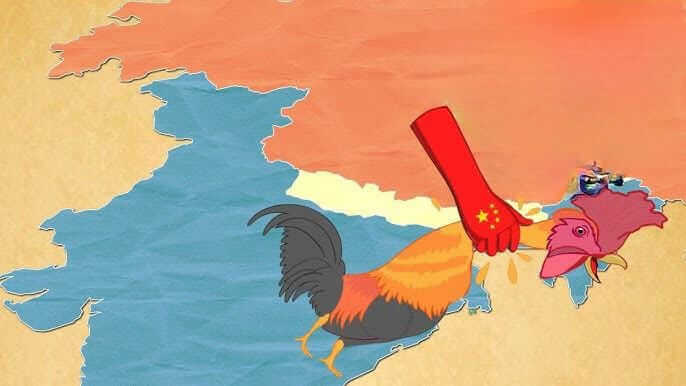Geographical Overview: Understanding the Chicken Neck’s location and its unique geographical characteristics.
You must have heard about the term Chicken Neck of India, well it is a geographical marvel that lies in the heart of India’s Northeastern canvas. It is very important as far as India’s geopolitical intrigue is concerned. Spanning a mere 22 kilometers at its narrowest, this slender strip is officially known as The Siliguri Corridor.
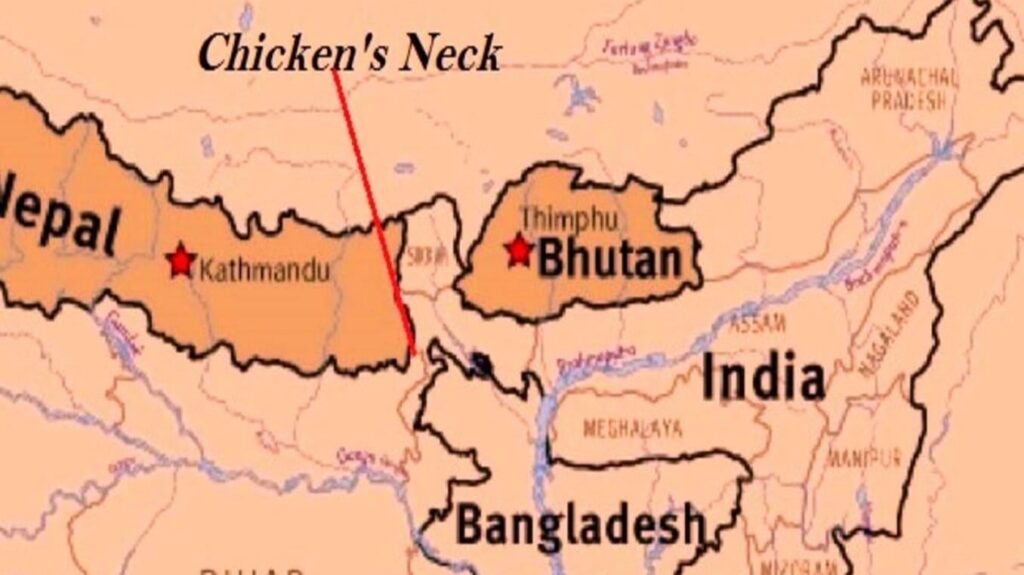
Geographically, this corridor is placed in a very significant position. Surrounded by the Himalayas, the Plains of Bangladesh to the South, Nepal to the west, and Bhutan to the North, Chicken Neck of India is more than a passage it is the only corridor that connects India’s mainland to the vibrant tapestry of Northeast India.
Join us as we unravel the significance and strategic importance of the Chicken Neck of India because we believe every inch of India’s land holds a tale waiting to be told.
Strategic Significance of Chicken Neck of India
Exploring why this narrow land corridor is crucial to India’s security and regional dynamics.
The Chicken Neck of India is often termed as India’s Narrow Geographic Lifeline because it holds a very strategic importance in the nation’s security and regional dynamics. This slender corridor is nestled between three countries i.e. Nepal, Bhutan, and Bangladesh. The Siliguri Corridor or the Chicken Neck of India serves as the primary gateway to India’s northeastern states. Its control is very important as far as safeguarding India’s territorial integrity is concerned.
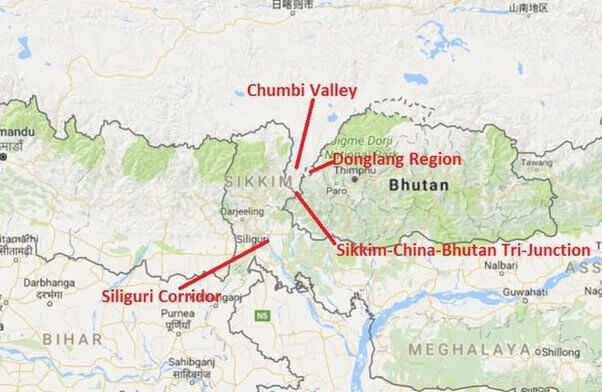
This particular corridor lies not very far from the China border and recently China has been eyeing to twist the Chicken Neck of India as that will detach the whole of North East from mainland India. Thus, this timid strip of land transcends its size, emerging as a pivotal chess piece in India’s strategic calculus, where its security and regional stability are deeply intertwined.
Historical Context of Chicken Neck of India
Tracing the historical events and developments that have shaped the importance of the Chicken Neck.
Though the Siliguri corridor came into existence only after the partition of India and Pakistan,the significance of this narrow strip is etched in the history.
The relevance of the Chicken Neck of India dates back to ancient trade routes that connected the Indian subcontinent with Tibet and Southeast Asia. In the colonial era, British India was the first to recognize its value as a critical transit point, solidifying its importance further.
After its independence, the Chicken Neck played a key role during the Indo-China War of 1962. This war also points to the underlying strategic vulnerability of this strip. Hence, this event acts as a stimulus to a renewed focus on increasing security and fortification of this vulnerable Chicken Neck of India.
Read More: Exploring the Parvatmala Project: National Ropeways Development Programme
Additionally, during the Bangladesh Liberation War of 1971, this corridor witnessed a huge influx of Bangladeshi refugees, highlighting the humanitarian significance of the Siliguri corridor.
Over time, the Chicken Neck’s historical narrative has evolved into a testament to India’s foresight in safeguarding its territorial integrity and regional stability.
Neighboring Countries and Relations:
Analyzing the impact of the Chicken Neck on India’s relationships with neighbouring countries.

The Chicken Neck, a slender but pivotal land corridor, profoundly influences India’s diplomatic relations with its neighboring countries
Nepal, which lies to the west of the corridor, shares not only the border but also deep cultural and historical ties with India. The strategic importance of Chicken Neck affects the dynamics of these ties as any disruption could impact trade and transit between the two nations.
Bhutan lies on the north of the Siliguri corridor. This corridor is very important from Bhutan’s perspective as it serves as a crucial conduit for their connectivity to the outside world.
Bangladesh, to the south, also shares a vital stake in the Chicken Neck, as it facilitates its access to India’s northeastern states.
Also Read: Operation Black Tornado: When Bravery Conquers Fear
Consequently, maintaining open and secure passage through this corridor is not only a matter of national security for India but a key determinant in the cooperative ventures and diplomatic engagements with its neighbouring nations
Security Challenges of the Siliguri Corridor
Discussing the security concerns arising from the vulnerability of this narrow passage.
Although the Chicken Neck of India is a very narrow zone, it carries weighty security concerns for India. Its slenderness makes it susceptible to enemy attack and makes it a strategic vulnerability. In the event of hostilities or conflicts, this corridor becomes a critical chokepoint, potentially severing vital links between India’s mainland and its northeastern states. The chicken neck of India or the Siliguri Corridor lies very close to the international borders; hence it amplifies security challenges and requires constant monitoring and vigilance against illicit activities and transgressions.
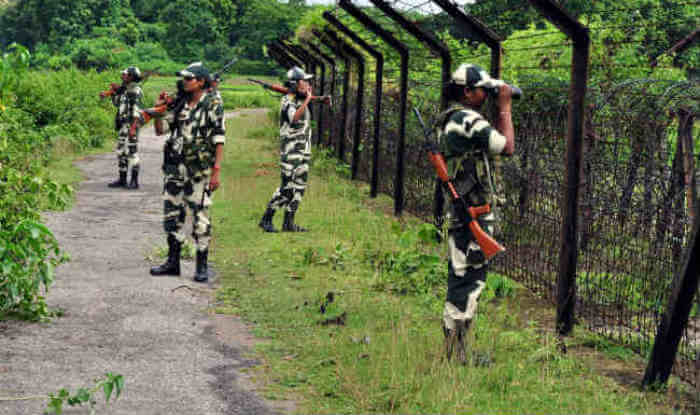
The terrain and dense vegetation of this corridor pose a great challenge for surveillance and defense. India’s neighboring countries keenly monitor the developments happening at this place because of the sheer importance of this passage. Therefore fortifying the Chicken neck of India against potential threat is most important.
India’s security forces remain engaged in ensuring the safety and integrity of this corridor, acknowledging its pivotal role not only in regional dynamics but also in safeguarding the nation’s territorial sovereignty.
Economic Corridor Potential:
Exploring the possibilities of transforming the Chicken Neck into an economic corridor for trade and connectivity.
The Chicken Neck due to its strategic location connecting mainland India to resource-rich Northeast, holds immense potential to evolve into a potential economic corridor. By improving infrastructure in this corridor, streamlining logistics, and promoting cross-border trade with neighboring countries, this narrow passage could become an accelerator to regional commerce.
Improving the infrastructure for better trade routes in this corridor would not only benefit in economic growth of the northeastern state but also help in envisaging International trade and partnerships with the neighboring countries. Due to the unique geographical position of the corridor, India can tap the untapped trade markets of Southeast Asia.
The development of the Chicken Neck into an economic corridor presents an opportunity to unlock the untapped potential of a region rich in natural resources, diverse cultures, and burgeoning markets, ultimately redefining its significance beyond its current strategic importance.
Infrastructure and Development:
Examining the ongoing and proposed infrastructure projects aimed at enhancing connectivity and security.
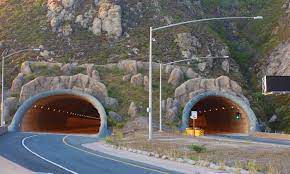
The Chicken Neck is a critical link in India’s northeastern connectivity and that’s why it is undergoing a transformative surge of infrastructure development. India is spending huge money on the expansion and modernization of road networks, railways, and air connectivity in the Siliguri corridor.
Additionally, plans for bolstering digital infrastructure are underway, ensuring seamless communication in this strategic corridor.
Heightened security measures like advanced surveillance systems, and developing border infrastructure are being implemented to safeguard the Chicken Neck of India. The proposed initiatives promise to revolutionize trade and commerce in the region, unlocking the economic potential of the northeast
Environmental Considerations:
Addressing the ecological implications of infrastructural development in Chicken Neck of India.
The Chicken Neck of India is a very significant region of India, India must focus on infrastructure development of this region but a thoughtful approach towards its ecological implications must be taken into consideration.
Take a look : What is Sir Creek Line? | Why it is still debatable between India and Pakistan?
This sensitive region is home to diverse flora and fauna which should be preserved through meticulous planning to mitigate environmental impacts. Some measures like green buffers and wildlife corridors are useful to preserve biodiversity and ensure the harmonious coexistence of infrastructure development and nature.

Additionally, sustainable construction practices and eco-friendly technologies can minimize the carbon footprint of development projects.
Engaging local communities and stakeholders in environmentally-conscious decision-making is vital to strike a balance between progress and preservation. By prioritizing environmental considerations, Chicken Neck can set a commendable example of sustainable development, demonstrating that progress need not come at the expense of our natural heritage.
Future Prospects of the Chicken Neck of India
The Chicken Neck’s potential for the future looks promising. This corridor will be crucial in strengthening trade relations with Southeast Asia as India increases its presence in the East. Due to its advantageous location, it serves as a hub for regional connectivity and may have an impact on commercial dynamics and diplomatic interactions. Additionally, improvements in infrastructure and security would confirm the Chicken Neck’s importance in India’s increasing regional and international engagements, putting it as a key conduit in the country’s geopolitical calculations.
In conclusion, the Chicken Neck of India, with its slender yet strategic presence, is not merely a geographic passage, but a symbol of India’s foresight, adaptability, and resilience. As history, security, economy, and environment converge in this vital corridor, it exemplifies the delicate balance between progress and preservation. The Chicken Neck of India stands as a testament to the nation’s ability to navigate complex terrains, both in geopolitics and geography, shaping its destiny with strategic acumen and environmental consciousness.
